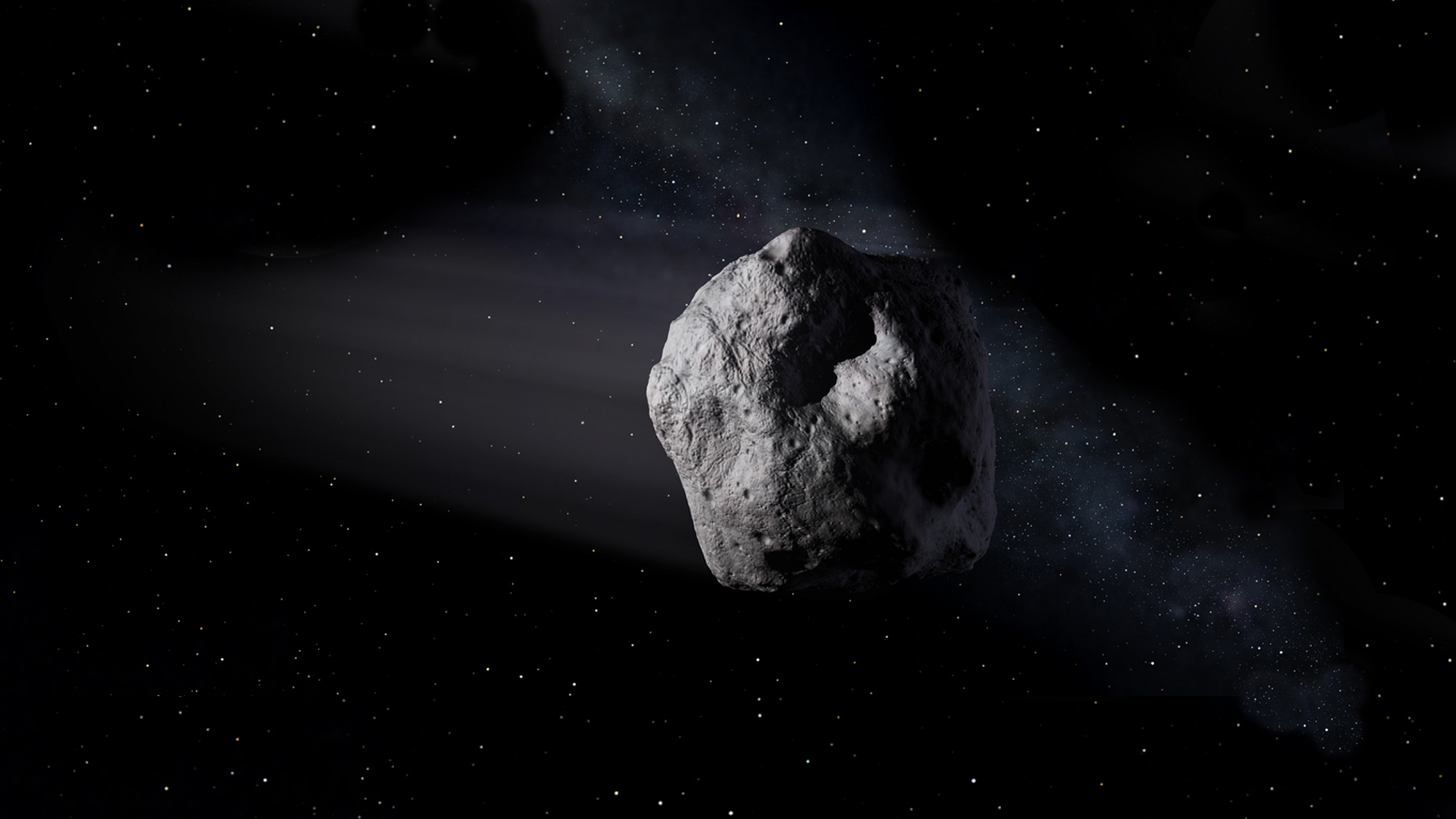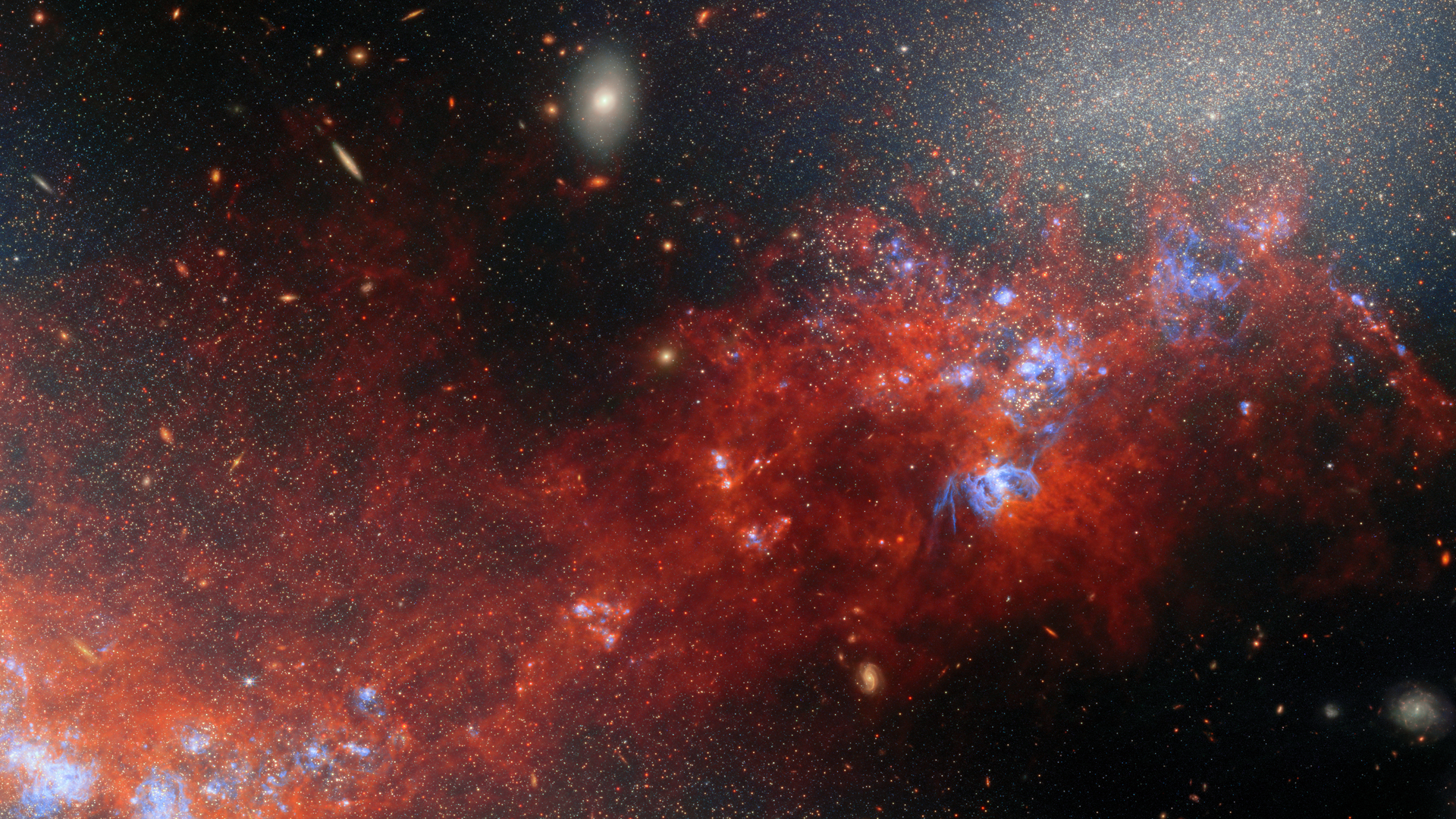Dangerous Asteroids May Be Lurking in Jupiter's Shadow

A group of asteroids and comets caught in Jupiter's shadow could pose a hidden menace for Earth: With stark enough changes to their orbits, the space rocks could crash into Earth or its neighbors.
That's the conclusion of a study that identified at least one object that could experience such an orbital shift. Identifying and monitoring other objects hidden in this population could help identify potential dangers to Earth far in advance.
As the largest planet in the solar system, Jupiter hides many asteroids and comets in its shadow. Some of these, such as its moons, are gravitationally bound to the planet. Others follow a similar orbit as Jupiter itself, circling the sun. For these groupies, a high inclination, or an angle with the plane of the solar system of more than 40 degrees, is tied to a low eccentricity, giving them a nearly-circular orbit.
Related: NASA Wants a New Space Telescope to Protect Us All from Dangerous Asteroids
A recent paper examines what could happen if the stable objects orbiting near Jupiter exchange their low inclination for a high eccentricity, creating a more oval orbit. According to the author, Kenta Oshima, a researcher at the National Astronomical Observatory of Japan, such a shift could be bad news for Earth.
"We pointed out the possibility that populations of undetected potentially hazardous asteroids exist at high-inclination locations of [these objects]," Oshima wrote.
A hidden armada
Tucked in the shadow of Jupiter, many of these objects are difficult to see from Earth. Right now, while their orbits are stable, that's not a problem. However, if their orbits shift, they could move from the safety of Jupiter onto a collision path with Earth or the other inner planets.
Breaking space news, the latest updates on rocket launches, skywatching events and more!
Once they begin to dance around Earth, they should become visible to surveys hunting for potentially dangerous objects. But their inherent danger means that astronomers should be working to identify them now, Oshima stated in his paper.
An object with a high inclination will dip in and out of the plane of the solar system that the planets orbit in, and so interactions will be few and far between. But as the inclination decreases and the object begins to spend more of its time closer to the solar system plane, the odds of a close fly-by or an impact increase.
"It is like in the case of airplanes," Carlos de la Fuente Marcos, who studies solar system dynamics at Spain's Complutense University of Madrid, told Space.com by email. "Flying high above the ground, they can only crash against something while landing or taking off. (De la Fuente Marcos was not part of the new research.) "But if they fly very low," he continued, "the probability of running into a mountain or even a building increases significantly."
Oshima has already identified one potential member of this hidden armada, 2004 AE9. The object orbits about 1.5 astronomical units (AUs; one astronomical unit is the distance between the Earth and the sun) inside the path of Jupiter.
Occasionally, the asteroid brushes past Mars on its orbits, getting as close as 0.1 AU. These fly-bys have changed the asteroid's orbit over time. The orbit has not only drawn closer to the plane of the solar system, it has also become more eccentric. While there is no danger of it impacting Earth in the near future, 2004 AE9 may one day shift its orbit enough to leave Jupiter and collide with a rocky planet.
"Objects originally moving in highly inclined but nearly circular orbits have a low probability of impact," de la Fuente Marcos said. "If they become unstable and inclination is traded for eccentricity, the path may become planet-crossing with a low inclination, which translates into a higher probability of impact."
According to de la Fuente Marcos, the process would take just under a million years, a fairly rapid development in astronomical terms.
A handful of planets and comets have been identified as Jupiter co-orbitals over the last few years. (The planet has also attracted a group of bodies called the Trojan asteroids, which orbit immediately in front of and behind Jupiter, and the orbits of which are unlikely to change. But other future hazards could be hidden near the giant planet; identifying them is important.
"It is worth it to keep an eye on them, particularly cataloging them to have a census and to better know the actual size of this potentially hazardous population," de la Fuentes said.
But the very same high-inclination paths that make them unlikely to cause problems for Earth or the inner solar system also make them challenging to find. That's because most surveys focus on the plane of the solar system, where objects more likely to collide with Earth lie.
Whether or not the hidden objects pose a danger to the Earth remains unknown.
"If they are numerous, the danger could be potentially high, but if they are scarce the danger could be completely negligible," de la Fuente Marcos said. "We do not yet know how many of them there are."
The research is described in a paper published Nov. 18 in the journal Monthly Notices of the Royal Astronomical Society.
- How Earth Life Could Come Back from a Sterilizing Asteroid Impact
- Saturn Could Be Defending Earth From Massive Asteroid Impacts
- NASA Wants a New Space Telescope to Protect Us All from Dangerous Asteroids
Follow Nola on Facebook and on Twitter at @NolaTRedd. Follow us on Twitter @Spacedotcom and on Facebook.


Nola Taylor Tillman is a contributing writer for Space.com. She loves all things space and astronomy-related, and always wants to learn more. She has a Bachelor's degree in English and Astrophysics from Agnes Scott College and served as an intern at Sky & Telescope magazine. She loves to speak to groups on astronomy-related subjects. She lives with her husband in Atlanta, Georgia. Follow her on Bluesky at @astrowriter.social.bluesky
